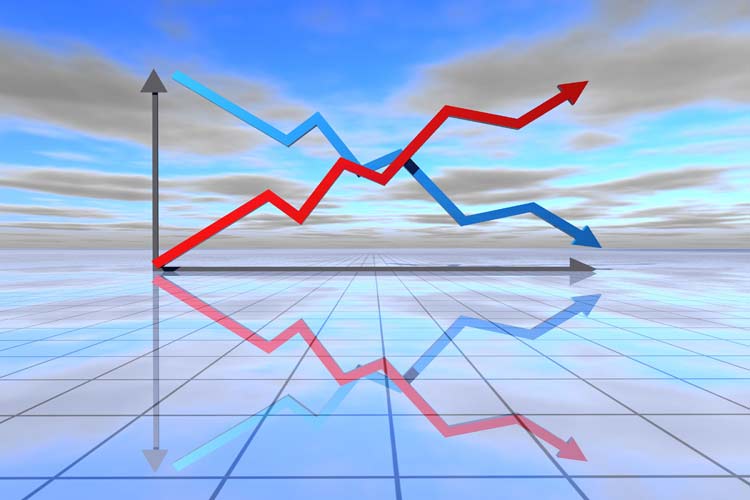
The DJIA and SPX could be headed for their first six-day losing streaks since last August
With a slew of central bank meetings across the world happening this week, and the much-anticipated "Brexit" vote just around the corner, traders have been fleeing stocks as fear escalates. The Dow Jones Industrial Average (DJIA) and S&P 500 Index (SPX) have closed lower for the past five sessions, and spent most of the day in the red so far today. Should these market indexes finish the day in negative territory, it will mark the first six-day losing streak for both the DJIA and SPX since last August.
Schaeffer's Senior Quantitative Analyst Rocky White compiled data on what happens to each of these major indexes after a six-day losing streak, going back to 2000. Beginning with the Dow, the table below shows each instance in which the index closed lower six or more days in a row, as well as how the large-cap index performed over the next day, week, month, and three months.

As you can see, the streak we are on so far has given a relatively modest loss, compared to many of the other losing streaks in the last 16 years. The charts below compare the outcomes of these losing streaks to the Dow's anytime performance since 2000.


In the short term, a Dow losing streak of six days or more appears to be a discouraging indicator, averaging a one-week loss of 0.6%, compared to a slight gain for any one-week period. But as we move out further, things start looking up. At one month after a six-day losing streak, the DJIA's average return climbs to 1.5%, compared to 0.3% anytime. And after three months, the average return after such a streak is 3.3%, still beating an anytime three-month return of 1.1%.
Moreover, the Dow has given a positive three-month anytime return 61.3% of the time since 2000, while three-month returns after a losing streak of six or more days have been positive 71.4% of the time.
And while volatility has tended to be higher in the session after a losing streak, it normalizes after one month -- and is typically lower by the three-month mark, at 6%, compared to a 7.3% standard deviation for three-month anytime time frame. This tells us that volatility may spike in the short term, but may quiet down after a few months.
The following charts shows similar data for the broader SPX. As you can see, the SPX has only seen 10 losing streaks of six or more days since 2000 -- versus 21 for the Dow.

At first glance, the SPX shows a similar pattern to the DJIA. Average returns one week after a six-day losing streak are well below average one-week anytime returns. But after one month and three months, post-losing-streak returns have tended to be higher than anytime returns.


Interestingly, though, standard deviation on the SPX spikes three months after a six-day losing streak, to 11.9%, compared to 8% anytime. Plus, while average and median returns are higher three months post-losing streak compared to anytime, the SPX is positive just 50% of the time after a losing streak, compared to 61.2% of the time for any three-month time frame. So while history tells us that bigger returns may be likely after a losing streak of six days or more, the performance of the SPX over this period may be more difficult to predict than that of the Dow.
If, however, the indexes manage to end the day higher, capping their losing streaks at five days, chances are good that they could see a similar pattern of higher returns in the months to come.
Let us help you profit from market volatility. Target big gains in short order with a 30-day trial of Schaeffer's Weekly Volatility Trader!